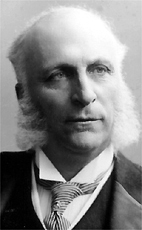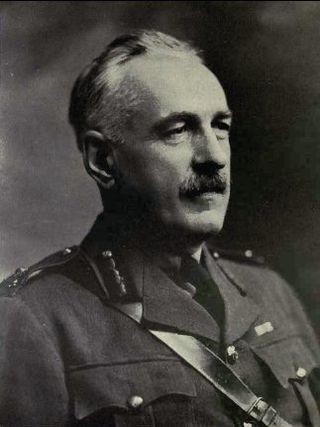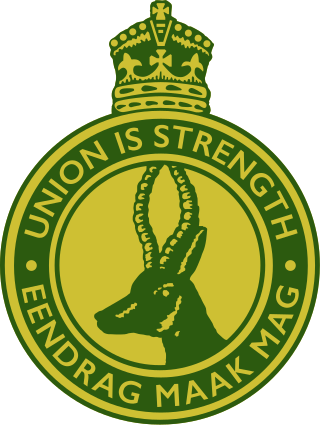Related Research Articles

Sir Robert Laird Borden was a Canadian lawyer and politician who served as the eighth prime minister of Canada from 1911 to 1920. He is best known for his leadership of Canada during World War I.

Sir Samuel Hughes, was the Canadian Minister of Militia and Defence during World War I. He was notable for being the last Liberal-Conservative cabinet minister, until he was dismissed from his cabinet post.
Canadian Forces Base Borden, formerly RCAF Station Borden, is a large Canadian Forces base located in Ontario. The historic birthplace of the Royal Canadian Air Force, CFB Borden is home to the largest training wing in the Canadian Armed Forces. The base is run by Canadian Forces Support Training Group (CFSTG) and reports to the Canadian Defence Academy (CDA) in Kingston.

The minister of national defence is a minister of the Crown in the Cabinet of Canada responsible for the management and direction of all matters relating to the national defence of Canada.

Sir Frederick William Borden, was a Canadian politician. While he was the Minister for Militia and Defence, he was the father of the most famous Canadian casualty of the Second Boer War Harold Lothrop Borden. Historians credit him with creating and financing a modernised Canadian militia with a staff and medical, transport, and signals that proved important for allowing Canadian ground forces to deploy with their own support services as self-contained national contingents, albeit in an imperial framework. In this sense, he helped to create the foundations for the Canadian Expeditionary Force of 1914–1918.
The Minister of Militia and Defence was the federal government minister in charge of the volunteer army units in Canada, the Canadian Militia.

Sydney Chilton Mewburn, was a Canadian lawyer, soldier, and politician.
The history of the Canadian Army, began when the title first came into official use in November 1940, during the Second World War, and is still used today. Although the official titles, Mobile Command, and later Land Force Command, were used from February 1968 to August 2011, "Canadian Army" continued to be unofficially used to refer to the ground forces of the Canadian Armed Forces, much as it has been from Confederation in 1867 to the present. The term was often even used in official military publications, for example in recruiting literature and the official newspaper of the Canadian Forces, The Maple Leaf. On August 16, 2011, the title, "Canadian Army", was officially restored, once again bringing the official designation in line with common and historical usage.
The 162nd Battalion, CEF was a unit in the Canadian Expeditionary Force during the First World War. Based in Parry Sound, Ontario, the unit began recruiting in late 1915 in that city. After sailing to England in November 1916, the battalion was absorbed into the 3rd and 4th Reserve Battalions on January 4, 1917. The 162nd Battalion, CEF had one Officer Commanding: Lieut-Col. J. M. Arthurs.
The Minister of National Defence for Air was the Canadian cabinet minister responsible for all matters related to military air services during World War II, notably the then-rapidly expanding Royal Canadian Air Force. The post was created by the 1940 War Measures Act, which specifically amended the National Defence Act of 1923. The Minister of National Defence for Air also served as President of the Air Council.

The Tenth Canadian Ministry was the second cabinet chaired by Prime Minister Sir Robert Borden. It governed Canada from 12 October 1917 to 10 July 1920, including most of the 13th Canadian Parliament. The government was formed by the Unionists, a war-time coalition between the old Conservative Party of Canada and some members of the Liberal Party of Canada. Borden was also Prime Minister in the Ninth Canadian Ministry, but formed a coalition ministry for the 1917 Canadian federal election.

The Ninth Canadian Ministry was the first cabinet chaired by Prime Minister Sir Robert Borden. It governed Canada from 10 October 1911 to 12 October 1917, including only the 12th Canadian Parliament. The government was formed by the old Conservative Party of Canada. The Conservatives governed in coalition with the Liberal-Conservative Party until 12 October 1916 when the last Liberal-Conservative cabinet minister, Sam Hughes, was dismissed. Borden was also Prime Minister in the Tenth Canadian Ministry, which he formed for the coalition government with the Liberal–Unionists in the lead up to the 1917 Canadian federal election.
The Canadian Militia is a historical title for military units raised for the defence of Canada. The term has been used to describe sedentary militia units raised from local communities in Canada; as well as the regular army for the Province of Canada and post-confederated Canada, referred to as the active militias.
Major General Garnet Burk Hughes was a Canadian military officer during the First World War. Although he had shown promise as a cadet officer and was politically well-connected, he was judged not to be an able combat officer and, in the latter half of the war, was shunted away from the front lines to administrative roles.
The Minister of Aviation (Canada) was the minister in charge of the military air service in Canada prior to the creation of the RCAF. There was no official minister in charge of this department as Canada did not have a formal air force.

The Canadian Air Force (CAF) was a contingent of two Canadian air force squadrons – one fighter and one bomber – authorized by the British Air Ministry in August 1918 during the close of the First World War. The unit was independent from the Canadian Expeditionary Force and the Royal Air Force (RAF).

The Allied leaders of World War I were the political and military figures that fought for or supported the Allied Powers during World War I.

The Union Defence Force (UDF) comprised the armed forces of South Africa from 1 July 1912, when the Defence Act took effect, two years after the creation of the Union of South Africa, until 1957 when it was reorganised and renamed the South African Defence Force.

Major-General James Harold Elmsley, was a Canadian military officer who served with the Royal Canadian Dragoons in the Canadian Expeditionary Force during the First World War. Later in the war, he would command the 8th Canadian Infantry Brigade, as well as the Canadian Siberian Expeditionary Force during the Allied intervention in the Russian Civil War.
References
- 1 2 3 Vince 1950, p. 1.
- 1 2 Vince 1950, p. 12.
- 1 2 Hughes 2000, p. 14.
- ↑ Hughes 2000, p. 12.
- ↑ Vince 1950, p. 14-15.
- ↑ Dickson, 43
- ↑ Vince 1950, p. 20-21.
- ↑ Vince 1950, p. 22.
- ↑ Vince 1950, p. 223-24.
- ↑ Love 1999, p. 97.